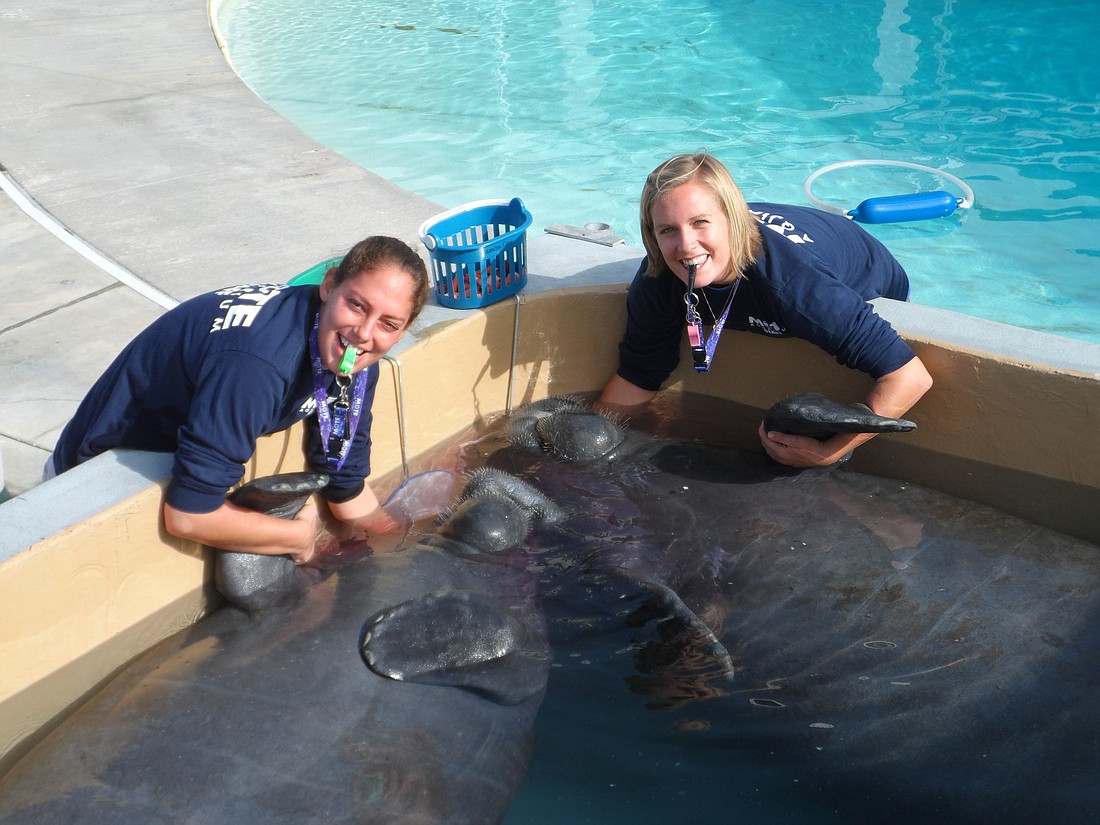- April 22, 2024
-
-
Loading

Loading

Manatees can feel water movements thousands of times smaller than the width of a human hair — an ability that makes them one of the most touch-sensitive mammals on Earth, according to a new study led by Mote Marine Laboratory scientists.
The study tested the touch sensitivity of Mote resident manatees Hugh and Buffett, the most extensively trained manatees in the world.
“Through their extensive training, Hugh and Buffett are able to tell us how well they can sense water movement,” said Dr. Joseph Gaspard III, Mote manager of animal care, training and research, in a prepared statement. “We send out a signal which is essentially a 3D ripple, and then we ask them, ‘Did you feel that?’”
During each research trial, a manatee positions its snout against a bar and waits. Then, a scientific instrument nearby creates the ripple with a vibrating ball or stays still. When the manatees feel the water movement, they are trained to touch a yellow paddle; when they feel no movement, they are to stay put.
The manatee is rewarded with apples, beets, carrots or monkey biscuits when it responds properly.
The manatees tried their whiskers at harder and harder tests involving lower vibrations, allowing researchers to determine the manatees’ threshold values.
The study was recently published in a special issue of the peer-reviewed Journal of Comparative Physiology A.
Contact Robin Hartill at [email protected].